by Jude Rogers.
11. Lea Lines
It is Friday, the Queen’s birthday, and my friend Andrew has the day off from work for the occasion. This is not because he is a royalist, but a civil servant. We lived together, just the two of us, for one glorious summer, in a small flat above a takeway on the Lower Clapton Road. Deterred by the smell of fried chicken and some garrulous neighbours, we left to move elsewhere, before I came back to the area, without him.
Since then, I have told Andrew about the lovely peace of the River Lea Navigation Route, and the comforts of Hackney Marshes, where I walked last week. During our short stay in E5, he had never gone there, so we had long planned to take a walk together from our old home to the Thames. We would follow the paths alongside the heavy, dark water, remembering our beginnings, finding and other endings.
Andrew stands in front of our old gate. He laughs, I take a picture, I smile, we walk on.
a. To get to the Lea from here, there are two options. The first takes us a little out of our way, going north through Millfields Park, but as I walked there last week, we take a less glamorous route. After the 1970s council houses, we arrive at our bridge. I take a photograph looking forward; Andrew takes one looking back.
b. Andrew is amazed how clear the water is as we wind south, and the plants rising like cabbages from the murky deep. We walk and catch up, going under Homerton Road, and I suddenly realise I have never gone this far.
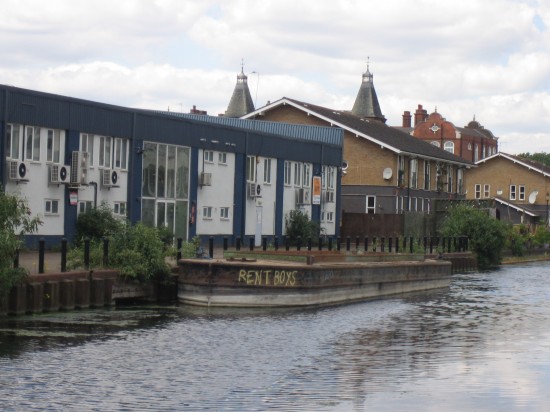
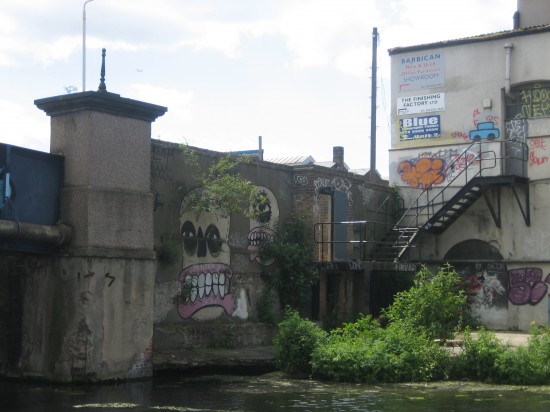
After the colourful graffiti on one side, and Barrett Homes on the other, the Olympic Park is suddenly upon us. It is kept away from humans by tall, silver railings. It seems incongruous here among the factories and warehouses, just as Canary Wharf’s Gotham City is at the edge of grimy Poplar. I try hard to take a photograph that sums up these different worlds, but they are determined to stay separate.
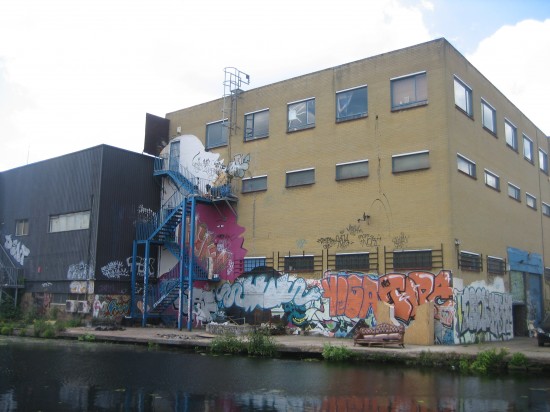
c. After a while, we past Fish Island to the east ¬– not an island at all, but a collection of streets with names like Roach, Bream and Dace. It is formed by the borders of the Navigation Route and the Duckett’s Canal, a short channel that leads to the Regents Canal. Its smoked salmon factory, Forman’s, now has a restaurant and art gallery, and bright, Bauhaus-inspired flats peer boldly around it. Tiny bursts of anarchic spray-paint nearby only deepen their dominance.
Back on our side of the water, Andrew stands in the shadow of the Olympic Stadium. As he does, I notice the natural world withering politely below it.
d. Past Old Ford Lock, we watch a swan looking after her cygnets, before finally emerging underneath the A12. Terrifyingly, we have to cross it, and we launch ourselves through the traffic. On the other side, we dip back to the water, down a tiny, scuzzy side-street called Global Approach, past a Calor Gas depot, where a shag parades for us (“a nice shag by the canal”, Andrew deadpans back). A few minutes later, we see it fighting an eel. They disappear around a corner; we never find out who won.
e. As if stepping into a dream, we then get to Three Mills, three beautiful old buildings that somehow survived the bombs. Nowadays, they make up London’s largest film studio, but they still feel marooned by the past, by the years. The conical roofs look like elegant hats, while the cobbles that surround them look untouchable, perfect. As lorries roll by half a mile away, we take in this little heaven.
f. After a stop for toast and tea, we sadly have to leave the Lea. At this point, it turns into Bow Creek, and starts to meander in tight loops around an industrial zone. We have to walk through this area, but with the river out of sight. As we do, we pass menacing gas towers and boxy silver depots, a bus stop for the London Gas Museum, and a street full of ambulances that murmurs with weirdness. It is like being in a post-apocalyptic film, we laugh nervously, hurrying ourselves to get to the other side.
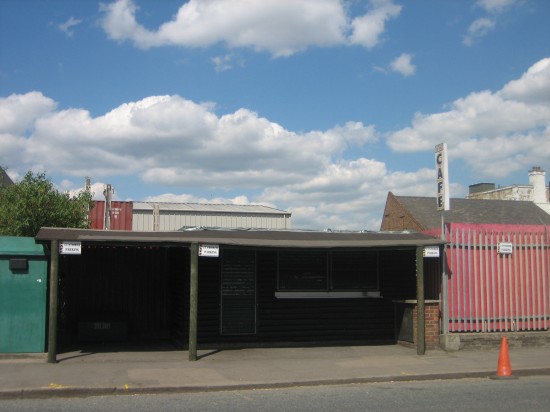
But there, on Stephenson Street, we find even stranger things. A closed café that looks like a relic from the American Mid-West. A lorry sitting, for some reason, on the top of a house. A Turkish baths that has a ladies day on a Wednesday, surrounded by parked cars, next to a paper recycling plant. 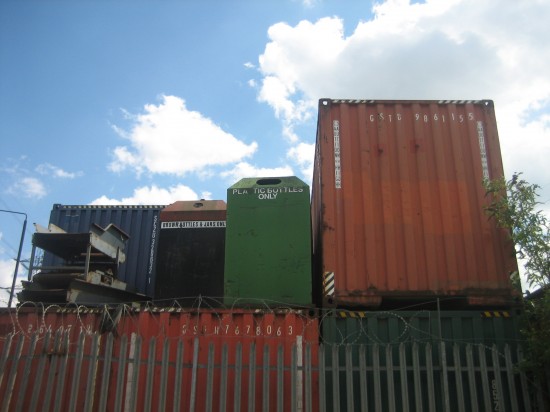
The electrical wires buzz audibly above us for the length of this road, until we meet the A13, and Canning Town, and breathe out.
g. The end of our walk is marked by the O2, which rises for us happily across the river. We reach Trinity Buoy Wharf, now an artists’ community, where the Lea finally trickles into the Thames’ hungry mouth. On the land, flats made out of container boxes stack up like Lego, and shipping ephemera sit about like art materials.
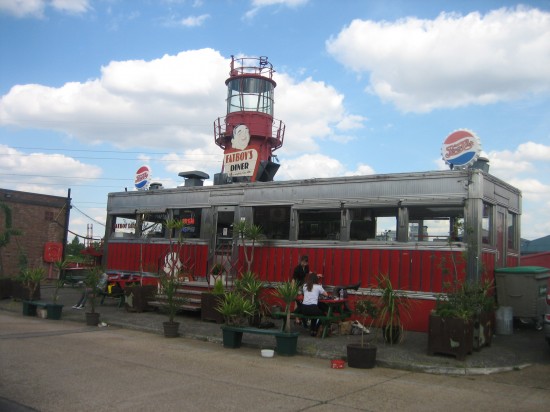
We also celebrate our arrival at Fatboy’s Diner, a 1950s jet stream restaurant that feels like an Edward Hopper subject, particularly in these peculiar surroundings. It began its long life on the banks of an American river, and as we share our burgers and chips – there is no fried chicken here, we laugh – I wonder how the Thames compares to the Susguehana. I also think about how far objects and people can travel, and how familiar, and how lovely, they can still be.